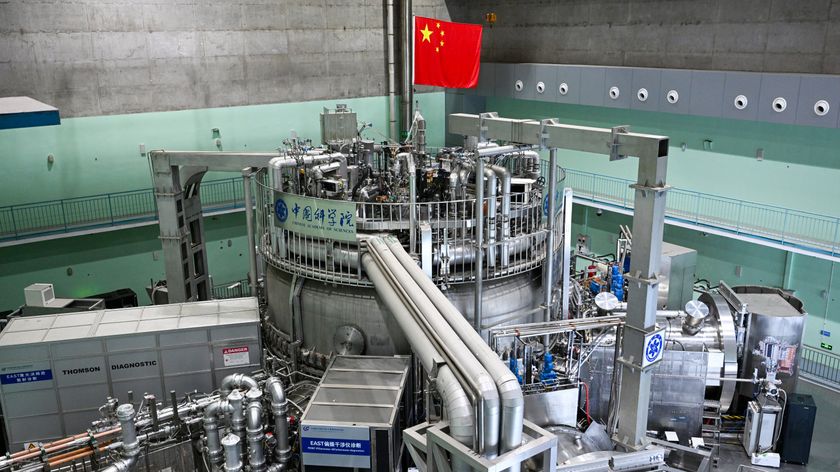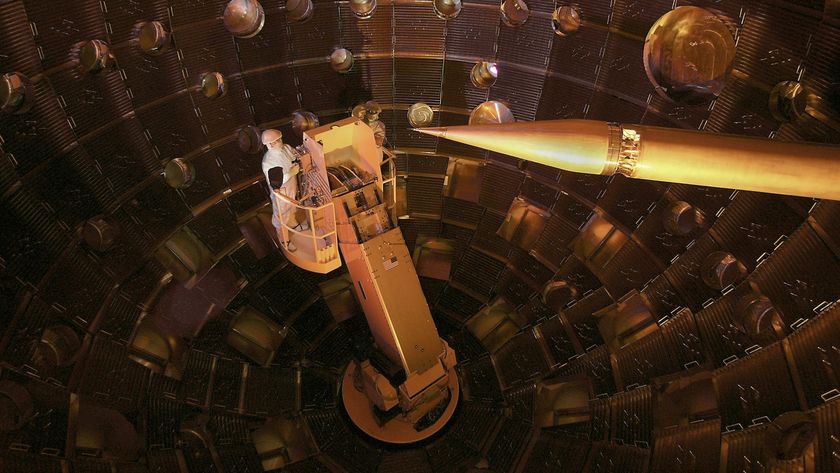Could Wildfires Threaten US Nuclear Reactors?
Firefighters are battling wildfires approaching a Russian nuclear center in the Nizhny Novgorod region, with fires also raging near another top Russian nuclear research center in the town of Snezhinsk. With nuclear energy facilities located near wildfires-prone areas in the United States, could such facilities here be at risk?
It's not very likely, according to U.S. Nuclear Regulatory Commission spokesperson David McIntyre.
"Generally, a wildfire would have little or no direct effect on a reactor building, which is a reinforced concrete structure with a steel liner, so the reactor inside would remain safe," McIntyre told Life's Little Mysteries. "A wildfire could, however, affect a plant’s ability to power its safety systems, so possible courses of action could include safely shutting a plant down before that happens."
Wildfires have drawn close to U.S. nuclear centers in recent years. California is especially vulnerable, as it is home to several nuclear power facilities and has a "fire season" lasting throughout the summer months and getting worse into the fall, when the Santa Ana winds begin to pick up, according to the National Interagency Fire Center.
In October 2007, intense wildfires destroyed nearly 1,000 homes and caused more than $1 billion in property damage San Diego County, California. The fires spread to Marine Core Base Camp Pendleton, located within 7 miles of the San Onofre nuclear power plant. Operated by the Southern California Edison in Oceanside, the plant has two reactors generating 2,250 megawatts of electricity, enough to power 1.4 million homes, but was not online at the time of the fires.
A wildfire caused by an electrical wire inside a mobile home burned within two miles of the Diablo Canyon nuclear plant in California in January 2007. The fire was extinguished before it could reach the nuclear power plant.
These close calls with wildfires bring up the issue of how well-protected nuclear power plants are from not just fires, but other natural disasters as well.
Sign up for the Live Science daily newsletter now
Get the world’s most fascinating discoveries delivered straight to your inbox.
"Every U.S. nuclear power plant licensee analyzes external hazards likely in its area and develops plans to deal with them," McIntyre said. "Plants in Iowa, for example, plan for floods but not hurricanes, while Florida plants would plan for hurricanes but not blizzards. California plants analyze the possibility of wildfires."
This March, a rash of fires within U.S. nuclear power facilities shined a spotlight on the need for plants to comply with fire safety regulations. At the Brunswick Nuclear Power Plant near Wilmington, N.C., a fire broke out in the turbine building on the plant's non-nuclear side on March 26. Plant personnel determined that the fire was caused by electrical equipment and was fueled by tape used to hold the equipment together.
Two other fires were reported at Progress Energy's Robinson Nuclear Plant near Hartsville, S.C. on March 28, also on the plant's non-nuclear side. Both fires began in the electrical breakers and caused the reactor and turbine to shut down.
Also on March 28, a fire broke out at Ohio-Based FirstEnergy's Perry Nuclear Power Plant near Cleveland. The flame was fed by oil in a water pump's lubrication system and resulted in two members of the plant's fire brigade having to be hospitalized for heat stress, according to news reports.
"Every plant must have fire protection measures in place to deal with internal fires no matter what the source is," McIntyre said. "Plants must have systems to detect and put out fires, and the plants must have procedures in place to ensure at least one set of equipment is available to shut down the reactor in case of a fire."
Most Popular




